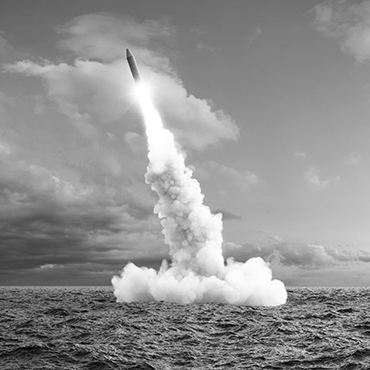THE FUTURE OF BODY ARMOR
Mines, IEDs, and roadside bombs often leave soldiers with both impact injuries and burns, due to the extreme heat generated by explosions and the projectiles they produce. Kit Parker, an Army Reserve lieutenant colonel who now teaches bioengineering and applied physics at Harvard University, set out to solve this problem. Currently, the molecular structure of materials that stop projectiles are the exact opposites of the fabrics that prevent burns. However, Parker's research has led to the creation of a "lightweight nanofiber material that can stop both bullets and burns." Testing of the new material has demonstrated that it is twenty times more resistant to heat than traditional body armor, yielded similar properties for halting bullets, and did so at a lower weight. The Army's Combat Capabilities Development Command Soldier Center is in the process of trying to duplicate and scale up Harvard's research and fabrication process. (Stars and Stripes, July 4, 2020)
RUSSIA SEEKS EMP WEAPONS...
The threat of an electromagnetic pulse (EMP) generated as result of high-altitude nuclear detonation has received national attention for years (see Defense Technology Monitor no. 29). Often overlooked in the discussion, however, is the danger posed by smaller EMP weapons. America's adversaries, meanwhile, are actively developing such capabilities. According to a Russian defense industry source, trials of such EMP weapons have been taking place since 2015, with the most recent occurring in Spring 2020. During the exercises, EMP cannons were used to successfully destroy equipment on ground and unmanned aerial vehicles (UAVs). Unlike radioelectronic warfare systems, EMP effects can cause irreversible damage to electronic systems. Reportedly, the average effective range of the Russian EMP cannons against aerial targets is four to five miles, with a maximum distance of around six miles. (Defence Blog, July 5, 2020)
...WHILE DOD WORKS ON DETECTION
In light of reports that U.S. adversaries are testing and developing electromagnetic pulse weapons, the Pentagon's Defense Threat Reduction Agency (DTRA) is developing methods to identify EMP attacks of various scales. Pentagon officials are concerned that soldiers in the field could be caught off guard by an EMP blast and have no way to evaluate the extent of the attack. Thus, the Pentagon has prioritized development of a "family of sensors," including sticker-sized sensors attached to warfighter uniforms, as well as larger sensor networks capable of quickly determining the scope of an EMP blast, if one does occur. According to Tom Cartledge of DTRA's Nuclear Detection Division, "this would include sensors for dismounted warfighters, mobile command posts, and fixed facilities. Because of size, weight, power, and data constraints with these different platforms, it is likely these sensors will vary in capability... These sensors would most likely be networked within larger systems to sharing early warning information and enable collaborative analysis." (Eurasia Review, July 20, 2020)
INCHING TOWARD ELECTRIC FIGHTER JETS
The UK's sixth-generation fighter jet, the Tempest, could be truly groundbreaking. The prime contractor in the development of the aircraft, BAE Systems, has teased the possibility of the Tempest being driven by a hybrid or fully electrical propulsion system. BAE recently absorbed a motorsports company with expertise in battery management and cooling technology, a move that advances BAE's ability to explore the electrical option further. However, despite the hype, there are still major hurdles to overcome before such propulsion becomes feasible. One is the likely inability of planes with electric engines to quickly recharge in midair, and do so with the same efficiency as a traditional fighter. Additionally, electrical power batteries may end up weighing more than a typical engine, and there may be a need for more - especially if the fighter carries new laser and anti-missile systems also now under development. (Popular Mechanics, July 15, 2020)
A NATIONAL QUANTUM INTERNET TAKES ITS FIRST STEPS
Maintaining secure communications is a necessity for science, industry, and particularly national security, but it is becoming increasingly difficult in the face of rapidly evolving cyber threats. The Department of Energy (DoE), however, thinks it has a solution. The Department recently released a report outlining a plan for 17 of the DoE's national laboratories to form the structure of a new quantum internet. The technology the new network would use makes the transmission of data effectively unhackable - and this system, in turn, could eventually be scaled up and applied beyond national security across the private sector. Research is already underway on the plan at facilities like the Argonne National Laboratory in Chicago, which can already transmit data in a functional 52-mile "quantum loop." (Energy.gov, July 23, 2020)
Want these sent to your inbox?
Subscribe
Defense Technology Monitor No. 56
Related Categories:
Cybersecurity and Cyberwarfare; Military Innovation; Science and Technology; Europe


